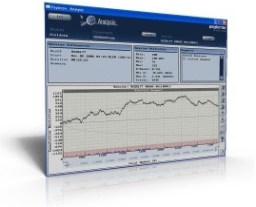Welcome to the CRV-REG Study

Random Event Generator
Put simply, the REGs put out a random stream of 1's and 0's. So within the device's inner workings there might be a sequence like this: 101011100100100101 and so on. A non-random stretch would have many more 0's or 1's and might typically look something like this: 000101100000000001. The speculation is that human intention in some way interacts with the random processes at the lowest level of the universe and imposes order there, and it shows up in the REG.

Remote Viewing Sessions
After four rounds of six viewers each, producing a total of 24 remote viewing sessions together with matching data sets for 24 REG sessions, the team was exhausted! But it was fun, and there were many lessons learned. The first was that we should all have practiced more. Most viewers (including the two of us) came in having not done any remote viewing for awhile, and so started off cold. As a result, the first set of sessions on Friday afternoon showed little site-contact for the RV sessions, and also very little REG movement away from the random baseline. Though we were all a little disappointed, it actually was supportive of our hypothesis, which was: for RV sessions that were less successful in "connecting," we should also see little impact on the REGs. Friday's sessions proved that to be true.For the three rounds of sessions on Saturday the sessions were still not as strong as these viewers have often performed in the past. Nevertheless, the sessions were of higher quality, and seemed to provide positive evidence for the other half of our hypothesis, which was that for RV sessions that did `connect' to the signal line, we would see the REG data streams affected towards non-randomness. On a first examination, that did seem to have occurred, and it appeared to correlate at least in some cases with portions of the session that were more strongly `connected' – just as we had thought might happen.
Contributors
One final thing: we want to once again to thank profusely the many people who contributed to this study, both in time and financial contributions. In particular we would like to acknowledge the viewers and volunteers, Ben Hargrove, Debbie Hite, Nancy Jeane, Catherine McKenna, Brian K. Prothro, Dallan Taylor, Donnae Tidwell, and fellow researcher Melvin L. Morse, M.D. Without your support this could never have come to fruition, and we very much appreciate it!Paul H. Smith
John P. Stahler